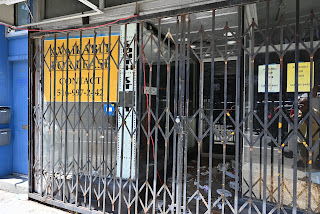In June of 2021, no one was on the street in Milwaukee, as chronicled in the Last Days of Lockdown. We walked around for an hour and saw very few autos or people on the sidewalk of a very walkable city and a prototype for a 15-minute city.
In European cities, the population of low income is less clustered intentionally like in the United States. Milwaukee, Philadelphia, and most Cities have clustered minorities and low-income people in certain sections of the city. The same is true in wealthy counties as minorities are clustered in smaller urban centers less than 15 minutes wide.
There are areas in America where, if you live in a white area, you may not see anyone of color during the day. Conversely, there are sections of cities where low-income and minorities are clustered, so they might not see a white person during the day.
Creating bike lanes would be a priority in some cases. In strong minority neighborhoods, it is considered a part of gentrification. There may be a decentralization of low-income people as part of the 15-minute city, especially if hot new restaurants open up in the sought-after area, currently 90%+ minority.
The 15-Minute City Create a Problem for Food Deserts?
Many US cities are segregated by race because, in most cases, there was an effort to restrict where minorities lived. People living in cluster sections of cities like Philadelphia have little or no grocery store choice. Thinking that will be addressed through a 15-minute walk or bicycle ride is simplistic.
Economic development works differently. It works the opposite in some cases. Endless process, crime, lack of available dollars to purchase goods. All play a factor in having a grocery store located in the neighborhood. Locating a grocery store with a wide variety of reasonably priced products takes a lot of work.
Public transportation could be difficult when food shopping, and attempting to create a decentralized array of stores offering the same selection as a suburban store is ambitious.
Covid Retail Closing Creates a Planning Problem for the 15-Minute City.
Office vacancies and remote work have strained retail goods, with the foot traffic different from prior to the pandemic. Trying to access a retail store for goods and services has changed significantly since the lockdown.
This could benefit planners working with economic development agencies within the target area. Food and services are scarce in some city areas, and the high vacancy rates could offer opportunities that would not normally exist. Perhaps planners could craft a strategy after a community needs assessment.
The 15-Minute Imitative Working in Conjunction with Other Jurisdictions
An example of a potential problem is that the City of Oxford (UK) has a 5.9% black population. The Oxfordshire County Council targeted six roads into Oxford City. They reduced traffic by imposing a traffic filter restricting the use of private cars in these areas during peak hours.
Residents could get a waiver permit for up to 100 days per year. The Council stated every part of the city was assessable by car at any time using alternate routes. Cameras will monitor activity, and there will not be manned checkpoints. The project is not part of Oxford’s 15-minute city plan but could be a supplemental measure or even a new measure that had merit.
In the United States, this would limit job market opportunities in the suburbs for minorities and low-income people. A plan like this would also take more automobiles off the commercial corridors and steer them through residential areas as part of some circuitous route.
What makes me Laugh about the Problems with the 15-minute City Planning Effort
Tremendous backlash labeled “conspiracy theories” is another way of combatting someone disagreeing with you. When I look at the 15-minute City, I think more of subways, trollies, and regional rail crossing large swaths of the city dynamically and effectively. Bicycles are fine, but I would not go back on the 15-minute city to ram through the bike lane, much to the annoyance of the current residents. In a way, it is classist and denotes gentrification by working against the wishes of current residents.
I do not believe you can argue mobility and access in an abstract and have to realize the social context of the action. There are few, if any black people in Oxford, so the arguments made there do not reasonable relate to the 15-minute city in America. There is a red flag with limiting access to the city by a neighboring jurisdiction, which shows how it can expand. It can expand once people get used to it, and certain populations could become isolated by design.

